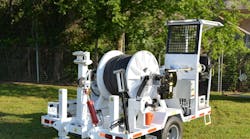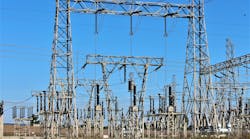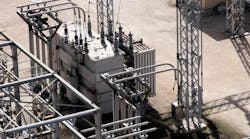When deciding whether to purchase or rent a piece of equipment, there are a number of things to consider. Everything from depreciation and maintenance, to finding the right piece of equipment for the job and on-site training.
Ownership
For investor owned utilities and contractors alike, owning a piece of equipment provides key benefits over renting. “When a customer is considering between renting and purchasing we act as an advisor, listening to our customer’s unique needs and ensuring their purchase is right for them,” said Donnie Bright, Business Development Manager, Sherman + Reilly, a Textron company.
Let’s take a look at an underground cable puller for example, owning this piece of equipment provides you with direct training from the manufacturer to ensure you are getting the most out of your equipment. Beyond training, having a close working relationship with the manufacturer provides numerous benefits, including expert service technicians and engineers ready to answer questions as well as provide new product updates.
Importance of Training
At Sherman + Reilly, training opportunities for owners abound. Customers are encouraged to take advantage of every training opportunity available to them to provide a seamless transition for their new equipment.
“Chappy Cardona is our technical tools specialist and he is constantly traveling around the country, commissioning new equipment and providing training directly to our customers,” said Bright.
With an equipment purchase, customers receive access to a comprehensive, long-term training program. If new employees need training three or four years after the initial training class, Chappy will come back and repeat the training to ensure the customer is getting the most out of their equipment.
Beyond on-site training, Sherman + Reilly provides supplemental training, including online videos and operation manuals. Some of the company’s equipment also comes with a help button embedded in the machine to allow customers to reference the operations manual during operation.
Renting
Ownership might not be for everyone. Renting and leasing allows a customer to try out a piece of equipment without the expense of buying it. Renting equipment can be used for short-term, specialty projects. Typically, companies rent equipment for a limited time, while leasing is usually a longer term arrangement and can last up to 20 years.
“Every customer is different and our goal is to provide options. We can work with a rental company to introduce you to one of our products and we can also offer leasing programs,” said Bright. “The goal is to ensure our customers are making the right decision for their business.”
Renting and leasing usually relieve the company of the duty to perform maintenance. And, depending on the contract, a customer might be able to switch out machines, so they always have the newest model. That might also be a downside. If a crew gets a different device every year, the new unit might come with added features and training might not keep pace.
The other downside is a company can only rent what is available and the equipment in rental fleets usually comes in standard configurations. You might end up renting a device that isn't exactly what you want. When buying, each feature and option can be carefully considered and chosen. Renters do not have the option to customize.
How to Decide
It’s important to consider all of your options: rent, lease or buy. Carefully evaluate the need and the project at hand. A good rule of thumb is to consider buying a piece of equipment that will do 90% of the job, and then renting to support the other 10%. Another option is rental purchase option (RPO), where a customer rents a product and actually ends up owning it at the end of the contract. It’s also important to consider the company you will be working with during your purchase decision. Let them lay out the options and understand your needs so you can tackle your next job.


